Mark Anthony Neal's Blog, page 340
January 28, 2020
Finding Strength In Fragility: Meet Maya Freelon

'Durham artist Maya Freelon’s large tissue paper installations have hung in the halls of the Smithsonian Arts and Industries Building and the North Carolina Museum of Art. She has received commissions from Google and Cadillac and was recently named one of five young artists to watch during Miami Art Week 2019. Her techniques transform tissue paper from schoolhouse craft to fine art and create community in collaborative quilt-making workshops.' -- The State of Things on WUNC
Published on January 28, 2020 15:43
The Barriers to Finding Mental Healthcare While Black
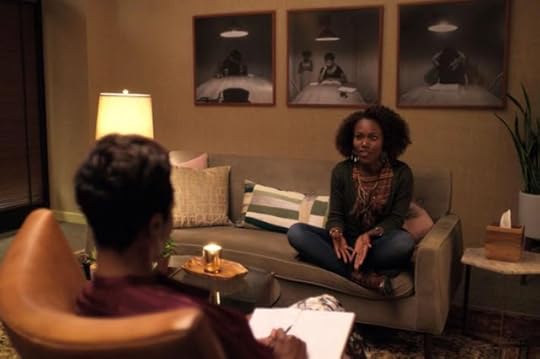
'There are many barriers to mental health care in the United States, including insurance, cost, and availability of therapists or psychiatrists. For people of color, these barriers can be much higher. Only around 4% of therapists are Black, and Black Americans are less likely to seek out mental health care. Dr. Joy Harden Bradford is the host of the podcast Therapy for Black Girls, and she recently sat down with Imade Borha, a writer and mental health advocate and the creator of the website Depressed While Black, to talk about the barriers to mental health care for people of color in the U.S.' -- The Takeaway
Published on January 28, 2020 15:31
Carrie Mae Weems: 'How Do You Measure a Life'

'Artist and MacArthur fellow Carrie Mae Weems recites a piece called, “How Do You Measure a Life.” An excerpt from the MLK celebration hosted by Jami Floyd, Alison Stewart and WQXR’s Terrance McKnight at the Apollo. This year’s theme was “The Strategic King: MLK's Visionary Leadership' -- All Of It
Published on January 28, 2020 15:25
How a Lost Recording Became a Philadelphia Soul Classic

'Philadelphia's Sigma Sound Studios recorded more than 200 gold and platinum records before closing its doors in 2003, eventually donating 7,000 tapes to Drexel University, including recordings by Stevie Wonder, David Bowie, Gladys Knight and hundreds of other unknown artists. Christoper Booker reports on the search for hidden gems in one of the city's most comprehensive musical archives.' -- PBS NewsHour
Published on January 28, 2020 15:02
Imran Mohammad on Genocide, Detention, and Refugeehood

'Taking advantage of his visit in Chicago, Léopold Lambert talked with our past contributor Imran Mohammad. In November 2017, he wrote a text for us about the Rohingya genocide that he fled while he was living his fourth year of detention in an Australian camp detaining hundreds of exiled people on Manus Island, Papua New Guinea. A few weeks later and while many detainees organized forms of revolt, the camp ceased to operate and 600 people including Imran were left in it without any sort of support, safety, nor supply. Since then, Imran succeeded in obtaining the refugee status in the United States and currently lives in Chicago where he found a supportive community.' -- The Funambulist Podcast
Published on January 28, 2020 14:42
January 27, 2020
What Does the Resurgence of White Supremacy Mean for the Future of Race Relations? Lawrence D. Bobo in Conversation
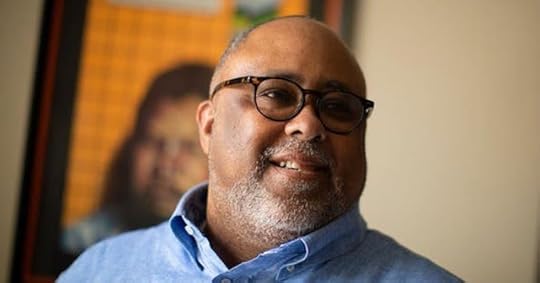
'Nearly two-thirds of Americans say it has become more common for people to express racist or racially insensitive views since the current administration took office. Majorities of Americans, across all demographics, say race relations have worsened in the last two years, and reports of hate crimes are soaring. Are these trends merely temporary, the short-term product of an angry era, unregulated digital media, and divisive political leadership? Or will the resurgence of white supremacy lead to a deeper shift in how Americans relate to each other? Harvard University sociologist Lawrence D. Bobo visits Zócalo Public Square to examine how the white supremacy of today is forging the America of tomorrow with Los Angeles Times columnist Sandy Banks.'
What Does the Resurgence of White Supremacy Mean for the Future of Race Relations? from Zócalo Public Square on Vimeo.
Published on January 27, 2020 09:56
Kenneth Shropshire on Racism's Persistence in Sports
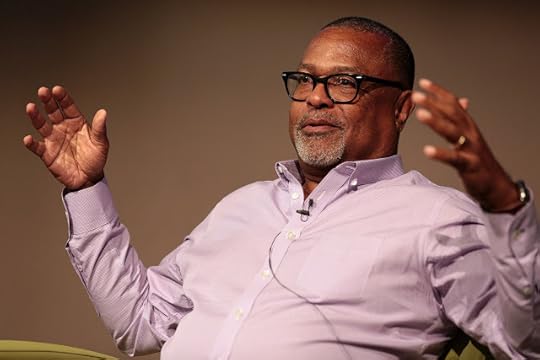
On this episode of Edge of Sports, host Dave Zirin talks with Professor Kenneth Shropshire about a host of issues pervading sports and how today's students are taking them in. Kenneth L. Shropshire is the Adidas Distinguished Professor of Global Sport and CEO of Global Sport Institute at Arizona State University. His most recent book is The Miseducation of the Student Athlete: How to Fix College Sports .'
Published on January 27, 2020 09:46
"RIP 8 and 24" by C. Liegh McInnis
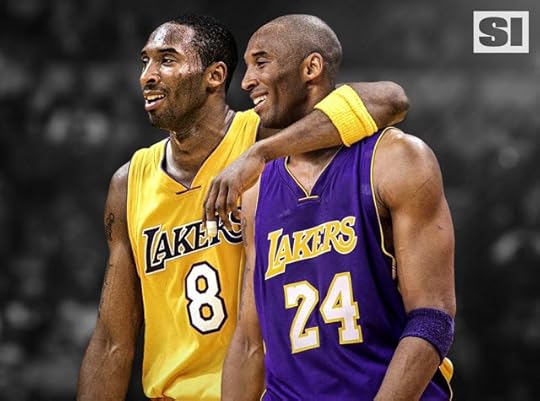 RIP 8 and 24
by C. Liegh McInnis | special to NewBlackMan (in Exile)
RIP 8 and 24
by C. Liegh McInnis | special to NewBlackMan (in Exile) Sports were as critical to my childhood as art. As I’ve stated many times, I was a mediocre three-sport athlete, emphasis on “mediocre.” Still, I learned many lessons from sports that continue to help me as an artist and an adult. As such, Kobe Bean Bryant becomes another example of how sports can be used to teach multiple lessons. Specifically for Bryant, his life will be the example of mental strength, the artistry of athletics, and one who never failed to take advantage of all opportunities, even when those opportunities came after missteps and mistakes. These are qualities that teach young people that success means not allowing our iniquities and our failures to define us. If more young people learn these qualities, society can greatly reduce issues, such as school dropouts, teen pregnancy, or allowing teen pregnancy and other missteps to the most defining moment of their lives.
First, Bryant was talented, diligent, and fearless. Most people have one or two of these qualities, but only the most productive have all three. He dared to dream that he could be the best when the vast majority doubted that he could be better than good. I know that it’s difficult to believe that there was a time when the majority of folks perceived Bryant as more hype than star. I, for one, thought that Shaquille O’Neal was making a great mistake by leaving Penny Hardaway and the Orlando Magic to join forces with Bryant and the very subpar Los Angeles Lakers. But, like the greatest among us, Bryant had self-belief, intelligence, and a work ethic that enabled him to surpass the doubters and even his own dreams. From shooting four airballs to end a 1997 playoff game his rookie year to becoming known as one of the most clutch performers of all time, Bryant always attributed his growth and success to working daily to become better.
As he once stated, “I can’t relate to lazy people. We don’t speak the same language. I don’t understand you. I don’t want to understand you” (Bryant). Each year he increased his productivity until he and O’Neal became the last tandem to three-peat as champions. Later, without O’Neal, he earned MVP honors and lead his team to another championship. From doubted to undeniable, Bryant is an example of what happens when one combines diligence and self-belief with talent, retiring as the third all-time leader in points scored (“All Time Leaders”). As such, when more young people are taught to love themselves and work for what they desire, issues, such as drug abuse and theft, will greatly reduce.
Moreover, he was the rare athlete who was able to transcend athletics and become an entertainer/artist whose work, like an artist, made people see new possibilities about what the mind and body can do. He was an athletic visionary who gave new vision to those who followed him in the same way that Michael Jordan and others gave him new vision. Whether it was tremendous shot-making, amazing athleticism, or an unequaled competitive drive, Bryant never failed to provide something of which basketball lovers had never seen before, even those like me who cheered for other teams. ESPN First Take anchor Max Kellerman often states that “Kobe Bryant is the best ‘bad shot’ maker of all times,” which means that Bryant was a master of making shots that almost no one else would even attempt. However, unlike Jordan, Bryant was more like Tiger Woods, Stevie Wonder, and Michael Jackson as they became national names as young people. The world knew Bryant at the age of 17.
I would argue that only LeBron James has had more pressure than Bryant as a childhood phenom in the world of athletics. (Woods was known at an early age, but he never had the pressure of being the face of his sport until after he won a major title.) And, Bryant has, in most cases, surpassed the high expectations for him the moment that Jerry West, NBA Hall-of-Famer and even more successful as an NBA executive, identified Bryant and the successor to Jordan. Five championships later, it seems that West and Bryant were right in their vision that enables others to dream of even more. Thus, when more young people learn to embrace and nurture their dreams and couple their dreams with discipline and study, society will have more visionaries to solve issues, such as cancer, global warming, and alternate fuel sources.
Additionally, Bryant’s life teaches that all must make the most of whatever chances they are given. Most people only get one or two acts in their lives; Bryant’s life had three acts: the first part of his career before the rape allegations, the second part of his career after the rape allegations, and retirement. During the first part of his career, Bryant evolved from doubted if not hated teenage hype machine to one of the most feared, most beloved, and greatest players of all time. After the rape allegations, he was able to be found not guilty in a court of law and, more importantly, show on and off the court his ability to grow as a man and an athlete, which made him much more beloved in the latter part of his career than during the first part.
Specifically, Bryant became one of the biggest supporters of the NBA/WNBA Lean-in Campaign, which urges males to support females in their athletic and all-around endeavors. Then, in retirement, Bryant was able to do what so many are not—find happiness and productivity off the court. He won an Oscar in retirement for an animated short film, Dear Basketball, and his program Detail on ESPN+ and ESPN.com became one of the most popular shows for basketball analysis. Detail is loved because it is driven by Bryant’s two biggest characteristics, intelligence and work ethic. His weekly analysis is from the mind of Professor and Coach Bryant, which is why so many current and former players love it as well as the fans. Clearly, Bryant learned how to nurture his entire self, becoming a whole person, especially as a father to his children and a mentor to many others seeking his wisdom. NBA champion and scoring genius Kyrie Irving has identified Bryant as his favorite player who inspires him to be the best he can be. And, Bryant became such a mentor to Irving that Irving was unable to play after learning the news of Bryant’s death (PostSports Desk). However, Irving and others will remain as the people to show that one can overcome anything. Therefore, as more young people learn this lesson, they will not succumb to the difficulties that lead to high school dropout or cause them to join gangs because they will know that they have it in them to create or locate the opportunities that they need.
Ultimately, Bryant’s death at 41 teaches that people must strive for quality of life and not quantity of life. It is the dash between one’s birth and death that signifies who one is and what one means to others. Bryant’s dash will be a blueprint of how to get the most of what one is given. His legacy is that human beings are pie charts with multiple slices that combine to define who we are. Those who learn this lesson will be the ones to push themselves and their communities to reach their full human potential. We must always remember that studying history is not seeking and celebrating perfect people but learning how flawed beings worked daily to become better today than they were yesterday. RIP Kobe Bean Bryant (8 and 24) whose life can help others avoid the ills of drug abuse, teen pregnancy, gang culture, high school dropouts, and incarceration.
***
C. Liegh McInnis is a poet, short story writer, author of eight books, former editor of Black Magnolias Literary Journal, and an English instructor at Jackson State University.
Bibliography
“All Time Leaders.” NBA.com. https://stats.nba.com/alltime-leaders/.
Bryant, Kobe. “25 Kobe Bryant Quotes That Can Help You Overcome Every Challenge.” Goalcast.com. https://www.goalcast.com/2018/12/28/k....
Kellerman, Max. First Take. ESPN/Disney, 2019.
Koreen, Eric. “Kobe Bryant’s Ability to Sink Near-Impossible Shots throughout His Career Is What Will Forever Make Him Special.” National Post.com. December 7, 2015. https://nationalpost.com/sports/baske....
Post Sports Desk. “Nets’ Kyrie Irving Sitting Out Knicks Game to Mourn Bryant.” New York Post.com. January 26, 2020. https://nypost.com/2020/01/26/nets-ky.... <!-- /* Font Definitions */ @font-face {font-family:Helvetica; panose-1:0 0 0 0 0 0 0 0 0 0; mso-font-charset:0; mso-generic-font-family:auto; mso-font-pitch:variable; mso-font-signature:-536870145 1342208091 0 0 415 0;} @font-face {font-family:"Cambria Math"; panose-1:2 4 5 3 5 4 6 3 2 4; mso-font-charset:0; mso-generic-font-family:roman; mso-font-pitch:variable; mso-font-signature:3 0 0 0 1 0;} @font-face {font-family:Calibri; panose-1:2 15 5 2 2 2 4 3 2 4; mso-font-charset:0; mso-generic-font-family:swiss; mso-font-pitch:variable; mso-font-signature:-536859905 -1073732485 9 0 511 0;} /* Style Definitions */ p.MsoNormal, li.MsoNormal, div.MsoNormal {mso-style-unhide:no; mso-style-qformat:yes; mso-style-parent:""; margin:0in; margin-bottom:.0001pt; mso-pagination:widow-orphan; font-size:12.0pt; font-family:"Calibri",sans-serif; mso-ascii-font-family:Calibri; mso-ascii-theme-font:minor-latin; mso-fareast-font-family:Calibri; mso-fareast-theme-font:minor-latin; mso-hansi-font-family:Calibri; mso-hansi-theme-font:minor-latin; mso-bidi-font-family:"Times New Roman"; mso-bidi-theme-font:minor-bidi;} .MsoChpDefault {mso-style-type:export-only; mso-default-props:yes; font-family:"Calibri",sans-serif; mso-ascii-font-family:Calibri; mso-ascii-theme-font:minor-latin; mso-fareast-font-family:Calibri; mso-fareast-theme-font:minor-latin; mso-hansi-font-family:Calibri; mso-hansi-theme-font:minor-latin; mso-bidi-font-family:"Times New Roman"; mso-bidi-theme-font:minor-bidi;}size:8.5in 11.0in; margin:1.0in 1.0in 1.0in 1.0in; mso-header-margin:.5in; mso-footer-margin:.5in; mso-paper-source:0;} div.WordSection1 {page:WordSection1;}</style>
Published on January 27, 2020 09:25
#BigBlackData: A Celebration of Black History Makers
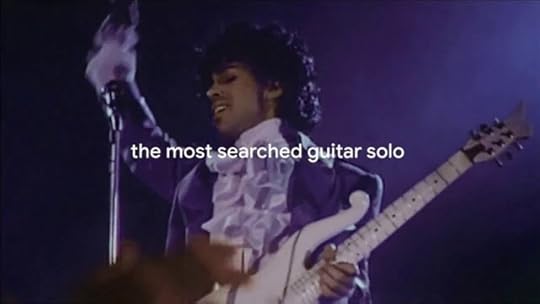 'To crunch #BigBlackData, Google used U.S.-based Trends Data to identify Black American achievements that were searched more than any others between January 1, 2004 – when U.S. Google Search Data first became available – and July 1, 2019. In other words, being the most searched talk show host means Oprah Winfrey was searched more than all other talk show hosts over this 15-year span. From the most searched speech to the most searched NASA mathematician, these individuals and moments not only have defined American history but also continue to inspire the nation.'
'To crunch #BigBlackData, Google used U.S.-based Trends Data to identify Black American achievements that were searched more than any others between January 1, 2004 – when U.S. Google Search Data first became available – and July 1, 2019. In other words, being the most searched talk show host means Oprah Winfrey was searched more than all other talk show hosts over this 15-year span. From the most searched speech to the most searched NASA mathematician, these individuals and moments not only have defined American history but also continue to inspire the nation.'
Published on January 27, 2020 09:11
January 26, 2020
Left of Black S10:E8: Oulimata Guéye and Afrocyberféminismes
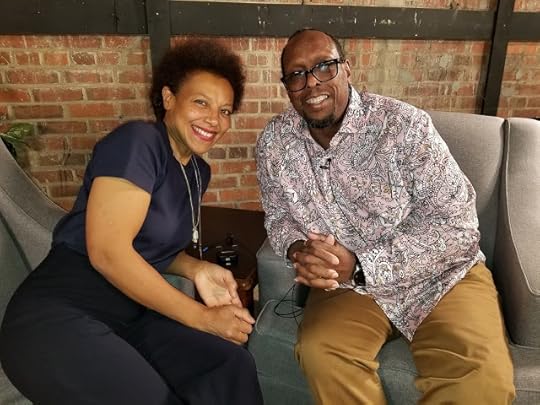
'Left of Black host Mark Anthony Neal (@NewBlackMan) is joined in the studio by critic and curator Oulimata Guéye to discuss her research focused on the impact of digital technology on urban popular culture in Africa, and on the imaginary worlds it produces.'
Published on January 26, 2020 05:45
Mark Anthony Neal's Blog
- Mark Anthony Neal's profile
- 30 followers
Mark Anthony Neal isn't a Goodreads Author
(yet),
but they
do have a blog,
so here are some recent posts imported from
their feed.



